
How These Solo Entrepreneurs Make Money with Their Email Lists
Solo business owners harnessing the power of email tell us how they grow communities around their newsletters – and how they make money with their email lists. Want to know what? You can do it, too.
“It seemed like a neat idea,” Ray Tomlinson said about creating modern email in 1971. Fifty-three years later, email is so common we can’t even imagine our world without it.
By next year, almost five billion people will have an email account. For businesses, that’s a lot of marketing potential – especially when you consider that 40% of people check their inboxes looking for brand discounts.
All the major corporations capitalize on these consumer habits. Last year alone, email marketing revenue was estimated at 10 billion dollars.
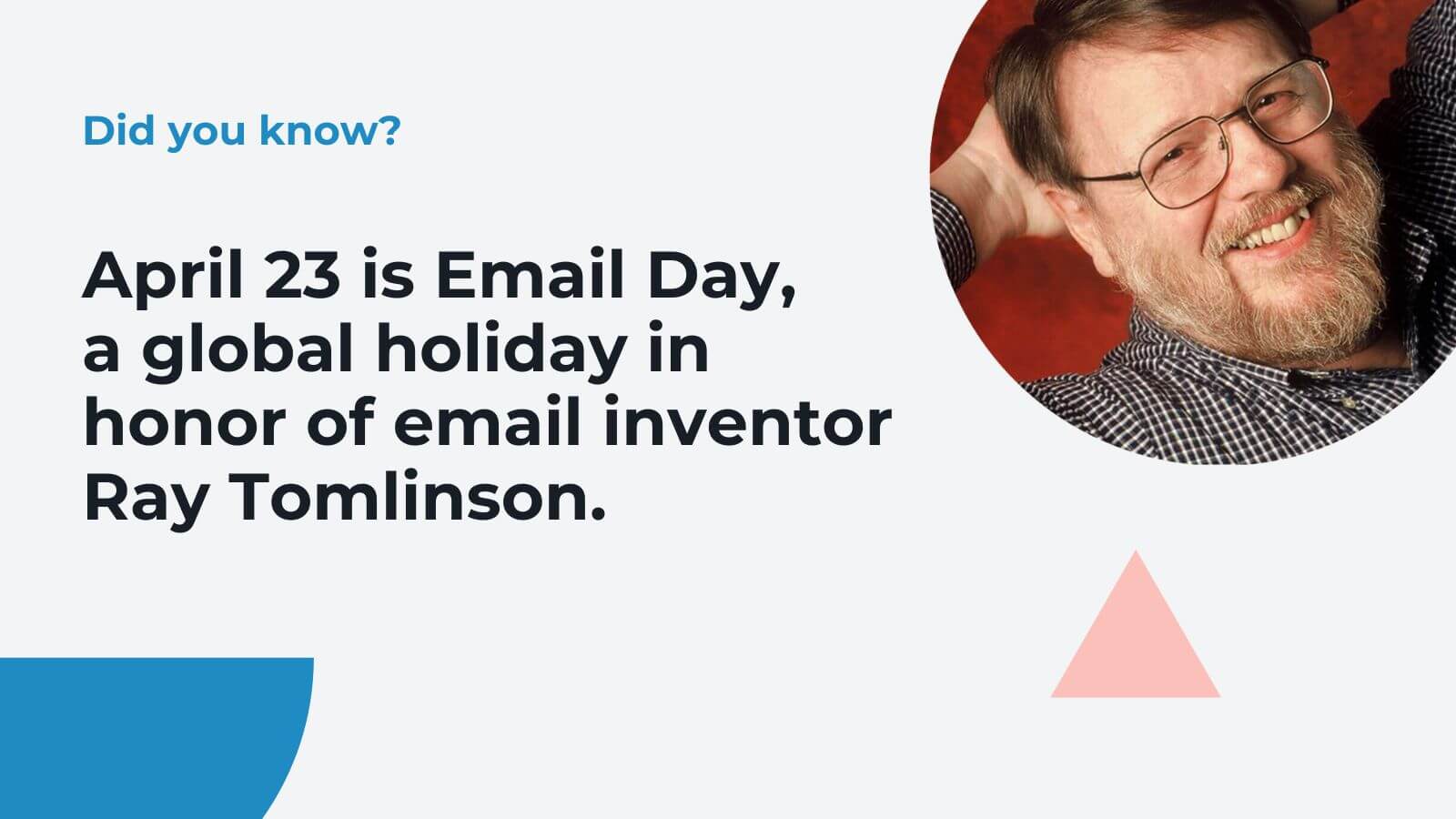
Solo entrepreneurs make money with their email lists, too
Email marketing isn’t just for big brands. Small businesses and solo entrepreneurs across all industries realize the power of email, too. Some of them make a living just off their email list.
“Our business is an email business,” Joanna Wiebe told ZeroBounce. “Everything we do comes down to lead generation and driving subscribers to sales pages. Without email, we’d have no business,” added the founder of Copyhackers.
“Email is the engine of my business,” copywriter Laura Belgray told us as well..
How to monetize your email list
Here’s the thing: not everyone who starts a newsletter ends up making money with it. For some, sending a newsletter may be just a hobby.
But if you do want to make money with your email list, what does success come down to?
We asked 10 solo business owners how they’re growing and making the most of their email lists.
From journalists to copywriters, independent content creators, and an independent record label – they told us how they use email to get the kwan.

Laura Belgray: “Make every email an EFAB (email from a bestie).”
It was Marie Forleo who turned Laura Belgray on to email marketing. But although Belgray started her list in 2009, it took her years to begin sending emails regularly.
“It was 2017, when I first set up a welcome sequence (because Convertkit made it too easy not to.),” the copywriter and founder of Talking Shrimp told us.
“I discovered…it works! And then, when I told Marie Forleo I was geeking out over email, she strongly suggested I write an epic blog post about it offering a new freebie. That’s when I created my subject line freebie and wrote this.”
Belgray has created many other free and paid resources in the meantime. Her courses have been so successful that she stopped taking clients as a copywriter. Instead, she sells her courses and runs affiliate offers via email.
Last year, she also published her first book, Tough Titties, which became a national best-seller.
Email marketing platform: ConvertKit
How Laura’s emails make money: digital courses; affiliate partnerships.
What is an email marketing misconception you had before you started?
Not a misconception, just a general cluelessness: I had no idea why I needed an email list.
My friend Marie Forleo (who later became my partner in The Copy Cure) told me in 2009 that I needed one, and I didn’t really understand why. But she was smart and knew how to make money, so, for once in my life, I followed instructions and started building one by putting an opt-in with a freebie on my website.
What are three great tactics you attribute your success to?
1. Being original and 100% “me” in my writing — something more valuable than ever in the age of AI.
2. Making every email what I call an EFAB (email from a bestie), meaning it feels like it’s from one friend to another rather than a “newsletter blast” to thousands of people.
3. Writing a ton, and emailing more than I’m comfortable with.
What’s your no. 1 piece of advice for people who want to start a newsletter?
Stay consistent, writing and sending that thing even when you think you have nothing to write about. You’ll find something. Writing creates inspiration, not the other way around.
Subscribe to Laura Belgray’s emails (she’s not a fan of calling them “newsletters”).
Pro tip: Email marketing is powerful, but only if your emails go to the inbox. About a quarter of your email list goes bad every year. Get rid of bad data to so that your emails don’t land in spam. Read about email validation – and how it’s helping companies like yours build more engaged audiences.
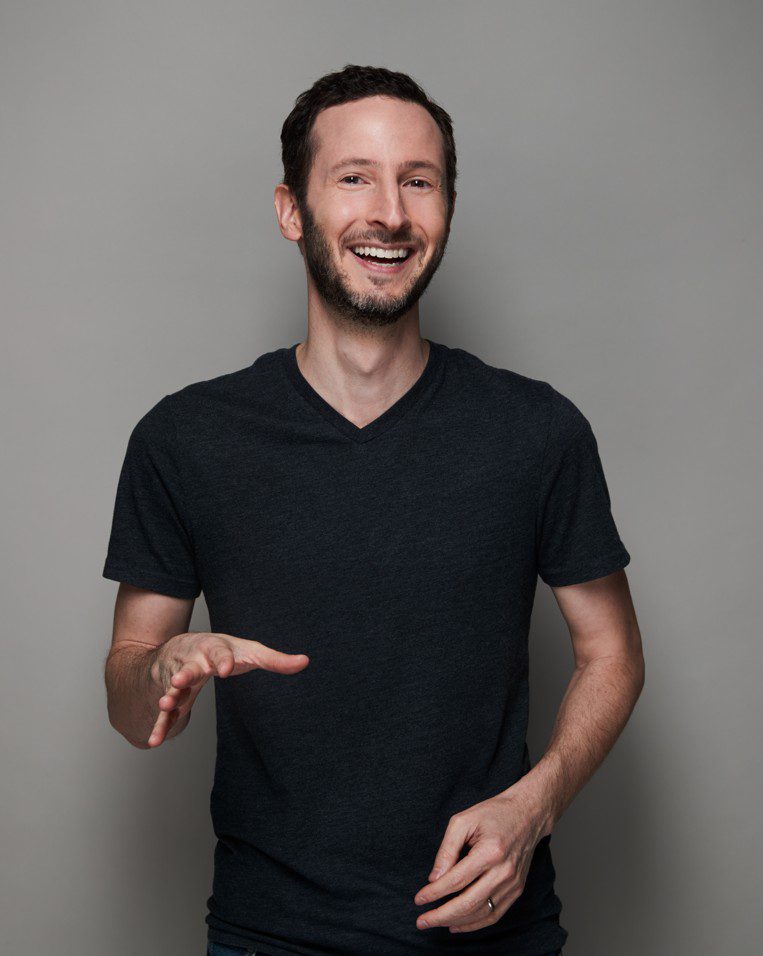
Jason Feifer: “Create a newsletter you can reliably execute every week.”
You may recognize Jason Feifer as the editor in chief of Entrepreneur magazine, or you may have listened to his podcasts, Problem Solvers and Help Wanted. He’s also a keynote speaker and author of the book Build for Tomorrow – an excellent guide on making the most of the big changes in our lives.
Feifer’s newsletter, One Thing Better, isn’t just another email you skim through in 30 seconds. It’s packed with nothing short of life-changing tips to be happier in your career and life. “The thing” that makes these emails so worthwhile, though? Aside from being a masterful storyteller, Jason Feifer knows what his audience wants and continues to deliver exactly that.
Email marketing platform: Beehiiv
How the One Thing Better newsletter makes money: ads.
What is an email marketing misconception you had before you started?
Subject lines!
I thought my subject lines needed to be these relentlessly value-forward, semi-formal pieces of writing. Then I started A/B testing, and discovered this crazy thing: For my newsletter, an email always performed better when the subject line was written very informally.
I started formatting the subject line as “The thing…” and then something slightly related to the thing I wrote about, like “The thing you’re still afraid of” or “The thing that can’t hurt you”.
Why does this work? I’ve thought a lot about it.
I think part of it is familiarity — by creating a voice and personality for the subject line, it immediately feels familiar to those who receive it. But also, it feels like something written by a friend. And people like opening emails from friends.
What are three great tactics you attribute your success to?
1. Consistent voice. Every week, my audience knows exactly how this newsletter will read and feel. I want them to rely upon it, which means I need to deliver exactly what they expect.
2. Consistent audience. I have a clear idea of who my audience is, and I always serve and respect them. I don’t deviate. The single most important part of making media is understanding who your audience is, what they want, and how you can deliver something that nobody else can.
3. Consistent process. My newsletter is complex: It’s a completely original essay of about 1,000 words, full of advice about how to improve something in your work. I write it on Tuesday, Wednesday, and Thursday mornings, give it a review on Saturday or Sunday afternoon, and have my wife read it Monday. Then I incorporate her feedback, set it to send on Tuesday mornings, and repeat the whole process over again. Having this process has been immensely helpful, because I now know when this will happen, and can structure my time around it.
What’s your no. 1 piece of advice for people who want to start a newsletter?
Create a newsletter that you can reliably execute every week. You know what you’re capable of — so don’t set yourself up for something so difficult or taxing that you’ll burn out after 10 editions. Newsletters are a long game, and you have to be in it for that.
Subscribe to Jason Feifer’s newsletter, One Thing Better.
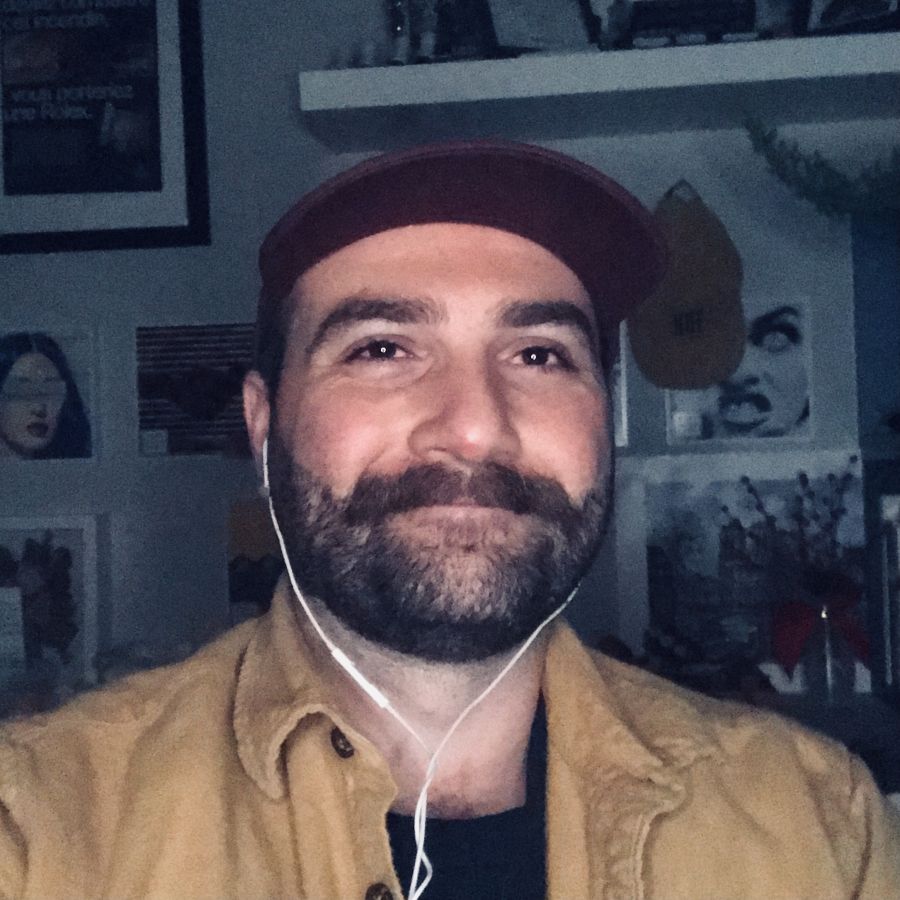
Eddie Shleyner: “A newsletter list is gold bars in the safe.”
HubSpot named him “one of the content marketing’s industry best copywriters” – and Eddie Shleyner confirms this with every email he sends.
His newsletter is an extension of his blog, VeryGoodCopy, which he started ten years ago and turned into a copywriting and content marketing business. Although he initially didn’t think about growing an email list, Shleyner now knows that email will “never disappear.”
More than 65,000 people subscribe to Eddie Shleyner’s very good emails. The secret to his success? The copywriting pro is a fantastic storyteller; he enjoys the creative process and uses “growth loops” to boost engagement.
Email marketing platform: Mailchimp
How the VeryGoodCopy newsletter makes money: sponsorships; products; services.
What is an email marketing misconception you had before you started?
Believe it or not, I thought email was an antiquated, “dying” medium and I would never surpass the 2000 free subscribers Mailchimp allotted new users.
Now, I believe email – the concept of a private, digital address – will never go away. (Just like the post office and your mailbox will never go away.) It will evolve but it will never disappear because it’s a fundamental part of society, a staple of the human condition. If you worry about starting a newsletter because one day it will become obsolete, don’t. It almost certainly will not. A newsletter list is gold bars in the safe.
What are three great tactics you attribute your success to?
One, I think my style – the way I write and present information – is my own. I use my own life, my own experiences and perspectives to frame the concepts I teach in my “micro-lessons” and this makes the content in my newsletter feel different (even if I’m writing about a 100-year-old technique).
Two, I’ve tried to prioritize the writing/creative process – enjoying it and being present – rather than focusing on the end-result of my content (i.e., likes, shares, comments, leads, etc.). I’ve found that if I actually enjoy making something, people will actually enjoy consuming it, too.
Three, I create growth loops. A “growth loop” is when growth is built into the process of using a product. In other words, leveraging your current users to create new users. I’ve done this by asking my VGC newsletter subscribers to amplify my reach on LinkedIn:
- One, I publish a micro-article on VeryGoodCopy dot com.
- Two, I re-publish a version of that piece in a LinkedIn post.
- Three, I send the original out in my newsletter with a CTA asking for engagement on the post (e.g., “Please support VGC with a quick
and comment on LinkedIn”).
When my newsletter audience engages with the LinkedIn post, their connections are notified, creating more engagement, more traffic to VGC, and more subscribers (adding to the audience I’m able to leverage in future posts).
How do you make money with your email list?
I sell sponsorships, consulting, and products, namely a course on how to compel more landing page visitors to buy, download, and subscribe.
What’s your no. 1 piece of advice for people who want to start a newsletter?
Start a newsletter and fill it with content you, personally, really enjoy.
Because as a writer, you are also your work’s first reader. So you must pay attention to how you feel about this word or that sentence, and you must trust yourself when something sounds strange to you, or off. You must key in on your emotions, your gut, because if it doesn’t move you, chances are it won’t move someone else. You must affect yourself first:
“No tears in the writer, no tears in the reader,” said Robert Frost. “No surprise in the writer, no surprise in the reader.”
Subscribe to Eddie Shleyner’s newsletter, VeryGoodCopy.
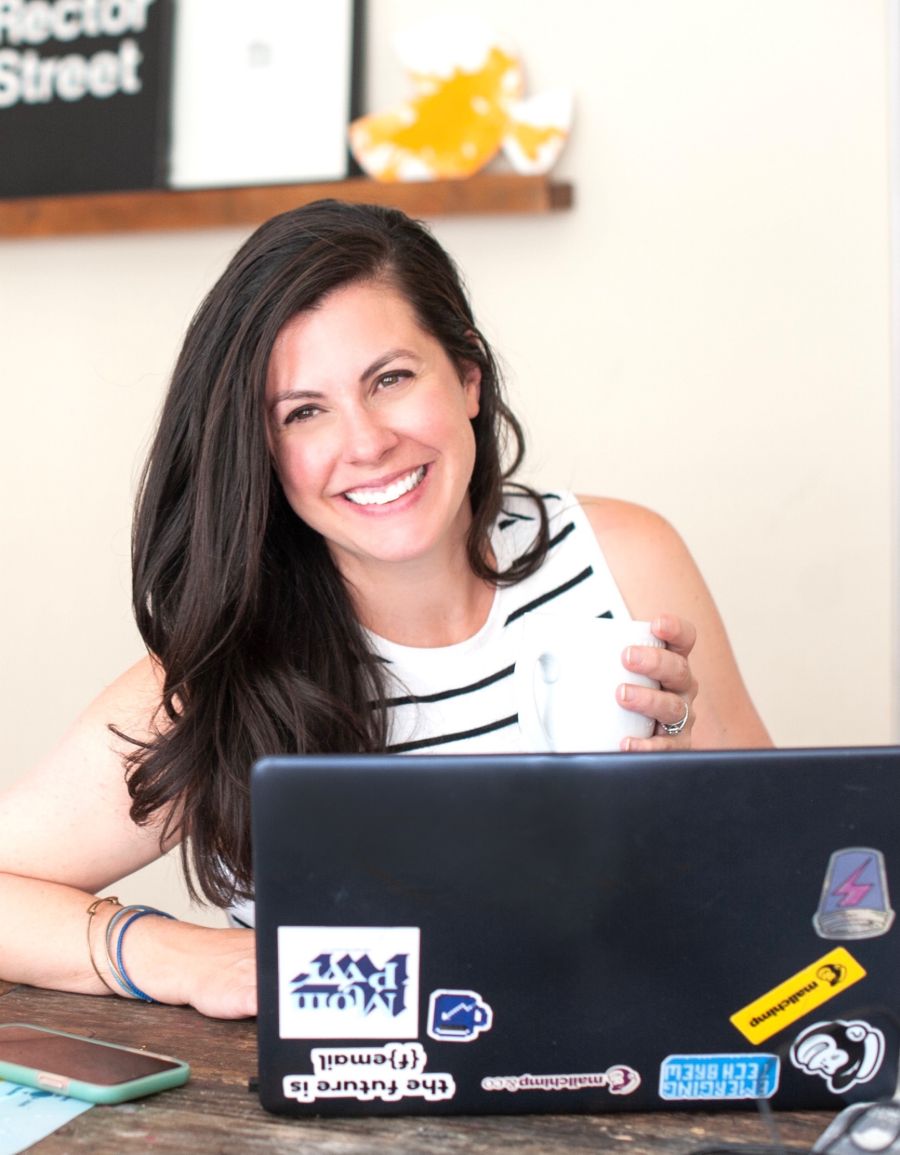
Emily Ryan: “You can monetize your newsletter with almost any following.”
After a corporate career in New York, Ryan founded Westfield Creative with her sister, offering Mailchimp email marketing services. Today she’s a Mailchimp Pro Partner and one of the most popular industry experts.
A true #emailgeek, Ryan started posting useful tips on Instagram and later created her own newsletter, 9 Things Sunday. In every email, she sends nine things that help and inspire her through the week. By all accounts, those nine things really resonate with subscribers.
Email marketing platform: Mailchimp
How the 9 Things Sunday newsletter makes money: ads; affiliate programs; workshops
What is an email marketing misconception you had before you started?
That my list wasn’t big enough to monetize my newsletter. You can monetize your newsletter with almost any following.
If you have a high-quality, engaged list of subscribers – that is worth so much. I would rather promote my business to 1000 highly engaged people than a list of 20,000 people who are mostly invalid/spam emails.
What are three great tactics you attribute your success to?
1. I’ve tried to always focus on content that I love and enjoy. If I don’t love it, then others won’t either.
2. Consistency, 1000%. No matter what, I made this newsletter a part of my week and it’s a big priority for me.
3. Keeping my email template as simple as possible so I can replicate them easily each week. Mostly plain text… no creating any graphics. Easy.
How do you make money with your email list?
We currently sell sponsored ad links for one of our 9 Things. We sell one ad for each Sunday email ($75 each). I also sell workshops through my newsletter as well (but haven’t done one in a few months). And soooonnn I’ll be selling an Office Hours monthly membership!
What’s your no. 1 piece of advice for people who want to start a newsletter?
Make the experience of creating your newsletter enjoyable each week.
If you don’t enjoy it, it will be hard to create month after month. Pick a time each week to sit down and create, make a great cup of coffee, put on a playlist and have at it. If you enjoy the process, it will show in your email!
Subscribe to Emily Ryan’s newsletter, 9 Things Sunday.
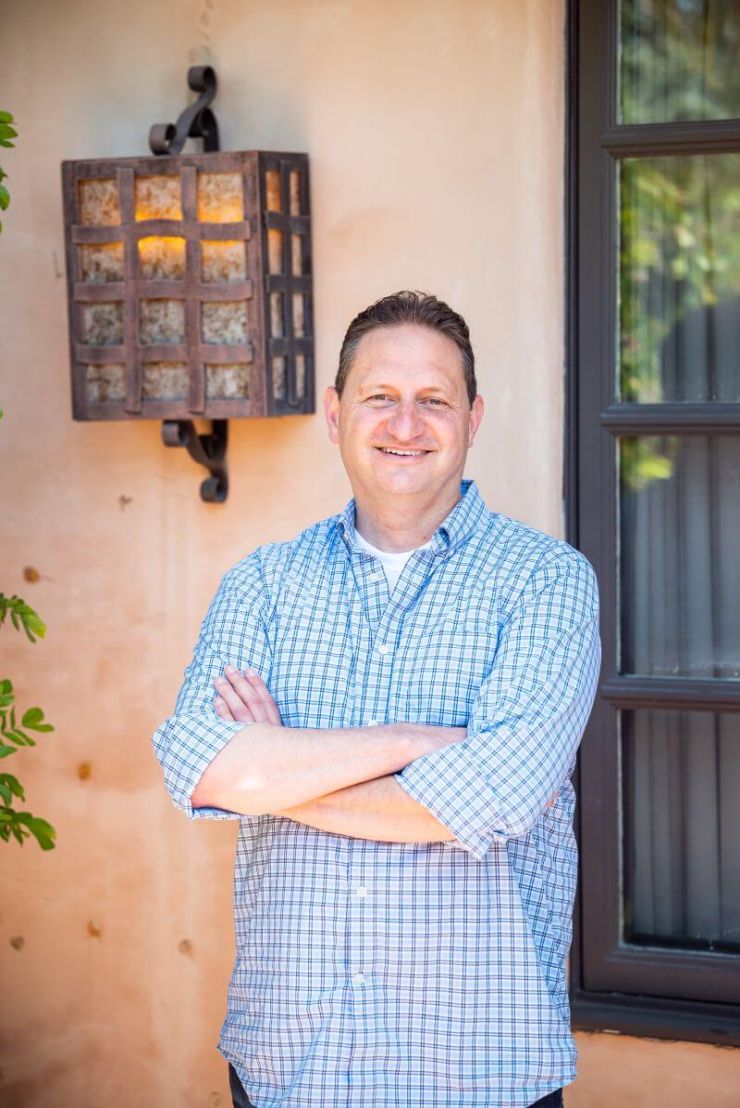
Josh Spector: “Provide specific value to a specific audience.”
It may be on its way to becoming a cliché, but with good reason: there are riches in the niches.
There’s a niche for everything, and Josh Spector’s specialty is helping individuals and companies grow their business through email. He does this through working one-on-one with skill sessions and his clarity calls. Josh also reaches many entrepreneurs through his articles, podcasts, and you guessed it — his email newsletter entitled For the Interested.
“I’ve had a variety of newsletters over the years,” Josh says, “and realized early on it’s the single strongest way to connect with and reach your audience because it’s algorithm-proof. Even the social platforms know email is a stronger connection to an audience than social media. That’s why they constantly want to send email notifications to their own users.”
For Josh, making money with your email list is all about getting subscribers to where they’re going through actionable content. You don’t just read his emails — you do it!
Email marketing platform: ConvertKit
How For the Interested newsletter makes money: ads; consulting sessions; a business training course
What is an email marketing misconception you had before you started?
I’ve been doing this a LONG time, so not sure they were misconceptions I had when I started, but they were misconceptions I had along the way.
I assumed people would hate ads in my newsletter – I was wrong. They love them when done well.
Also, I assumed sending daily emails would be too much – I was wrong. As long as the emails are concise and valuable, people love them.
What are three great tactics you attribute your success to?
- Consistency. I’ve published my newsletter every Sunday for 409 weeks in a row and published daily editions every weekday for the last couple years.
- An emphasis on actionable content. I only share things my readers can actually DO something with after they read my emails.
- A clear focus on the specific value I aim to provide to a specific audience. My emails are designed to help experts grow their business and everything I share aligns with that value proposition.
How do you make money with your email list?
I have three revenue streams. My Skill Sessions membership, consulting, and ads in my newsletter.
What’s your no. 1 piece of advice for people who want to start a newsletter?
You need to provide specific value to a specific audience, and that value should most likely be rooted in a transformation.
Your readers want to go from Point A to Point B, and the content you share is the bridge to help them get there.
Subscribe to Josh Spector’s newsletter, For the Interested.

Gabby Ianniello: “There are no rules in this game, so make up your own.”
After almost a decade in the corporate world, Gabby Ianniello left the 9-5 grind in 2021, in pursuit of building something of her own. She documented the process on Corporate Quitter, a platform she’s expanded into a podcast, YouTube channel, and newsletter.
She only started the latter last fall as she thought newsletters were dead and didn’t imagine she could make money with her email list.
“I’ve wanted to write a regular newsletter since I started my business in 2021,” Ianniello told ZeroBounce. “I have dabbled here and there, but only started to take it seriously in November 2023.”
On her channels, Ianniello helps others “escape corporate captivity” and build more fulfilling lives.
Email marketing platform: Beehiiv
How the Corporate Quitter newsletter makes money: digital products and programs; brand partnerships/ads; affiliate marketing; contractor work.
What is an email marketing misconception you had before you started?
I truly thought newsletters were a headache – both for the writers and subscribers.
For most of my adult life, I kept newsletter subscriptions to a minimum because I thought most were boring or just overall looked/read terribly, on top of them being overly sales.
But then I was exposed to what good newsletters actually looked like and I was hooked. Not to mention how impactful it’s been for the financial growth of my business and overall ability to connect more personally with my audience.
What are three great tactics you attribute your success to?
1. It sounds counterproductive, but I use the Wayback Machine (internet archive) often as a reminder that some of the people who I look up to at some point were exactly where I’m at. Instead of getting trapped in the comparison loop of where someone is at NOW, I look at where they’ve been as a form of motivation that I can, and will, play at their level some day.
2. Another is being trigger happy with unsubscribe/unfollow buttons. I’m constantly tweaking my feeds and inbox to cater to my ever-changing business, personal, and mental health needs to keep me chugging forward versus going down a spiral. Having a circulation of inspiration from other creators is a requirement, but it defeats the purpose if it’s killing your creativity.
3. Creating a routine, posting schedule, and overall creative flow that works for my energy + time has helped tremendously. Time blocking and all these different “time saving” strategies are GREAT, but they’re completely useless if I don’t have energy.
You can’t time block your way out of mental or physical fatigue. Taking some time to get to know my body, when my creativity spikes and dips, and what experiences or activities that are removed from technology help generate new ideas has helped me tremendously in business.
How do you make money with your email list?
Now three years into business, I can confidently say we’ve created a multiple-streams business model. We make money by selling digital products and programs, brand partnerships/ads, affiliate marketing, and consulting/contractor work.
Though we have many income streams, we’re still working on perfecting the machine. I’d like to automate it so we can consistently earn $10k+ months.
What’s your no. 1 piece of advice for people who want to start a newsletter?
There are no rules in this game, so make up your own.
It’s really easy to get caught up in the comparison model of what other creators are doing or what has traditionally been done. But you don’t have to follow that in order to have success. Though I mostly stick with a certain cadence and structure to create continuity, there are times where I go completely rogue and do something different because my creativity is tapped out.
It’s okay to be human!
Subscribe to Gabby Ianniello’s newsletter, Corporate Quitter.

Meryl Arnett: “Consistency is more important than any version of perfection.”
Meditation teacher, trainer, and podcast host Meryl Arnett knew she needed to start a newsletter early on in her business. Her main goal with the Our Mindful Nature emails was to keep in touch with her yoga and meditation students.
Like Laura Belgray and Jason Feifer, Arnett believes in building a genuine connection with her audience simply by being herself. That means writing emails that feel as if she were talking to her close friends. Another “secret” to building a community around her newsletter is that she sends it out like clockwork every week, on the same day and at the same time.
Meryl Arnett has been teaching meditation since 2010. Her podcast, The Mindful Minute, was in the top 5% most shared podcasts of 2022 and is consistently named a top 10 podcast.
Email marketing platform: I used Mailchimp for many years, and while I loved the functionality and design of Mailchimp, it became too focused on sales/revenue generation for me. I am much more interested in using my newsletter as a relationship builder, and I have loved the community-feel of Substack so far.
How Meryl Arnett makes money with his email list: programs; classes; training.
What is an email marketing misconception you had before you started?
Hmmm, I’m not sure I had any misconceptions.
My first job out of college was with a PR agency, and it was during that first work experience that the company shifted from hardcopy newsletters to digital newsletters. Watching the ease of growth and spread with that first email newsletter was memorable, so I knew early on in my entrepreneurship that I needed an email newsletter.
My first newsletter was created as a way to stay in touch with my yoga and meditation students. I used it to communicate upcoming classes and special events. Once I started the podcast, Our Mindful Nature, I used my email newsletter to promote each episode and share bonus content.
I’ve always kept my newsletters fairly casual and low-pressure so I enjoy writing them each week!
What are three great tactics you attribute your success to?
I write my newsletter as if I were talking to my close friends; I want my readers to feel like they really know me and that we are in an ongoing conversation. I keep things casual, heartfelt, and always written by me (even if that means a typo every once in a while!).
I also send my newsletter every week on the same day and at the same time so my readers know exactly when to expect my email in their inbox. Lastly, I always try to offer value in each newsletter, whether that is a free meditation download, a book recommendation, or a favorite recipe.
How do you make money with your email list?
I typically bring in revenue by selling my programs, classes, and trainings. I have occasionally run sponsored ads, but I’m quite protective of my community and only agree to sponsorships that I am truly excited by. I always want my newsletters to feel like a gift rather than a demand so I’m mindful that not every newsletter is selling something.
What’s your no. 1 piece of advice for people who want to start a newsletter?
Love this question — I get asked this about newsletters, podcasts, and meditation practice! My answer is the same for all three: Just start!
Don’t wait for the perfect moment, the perfect-sized list, or the perfect content idea. Write something heartfelt and hit send. Then do it again. In my experience, consistency is so much more important than any version of perfection!
Do you find more people to keep in touch with by subscribing to your newsletter or by subscribing to the podcast?
I have more subscribers to the podcast overall, but I love seeing new subscribers join my mailing list each week after listening to podcast episodes. It is a delight to watch this community continue to grow.
Subscribe to Meryl Arnett’s newsletter, Our Mindful Nature.
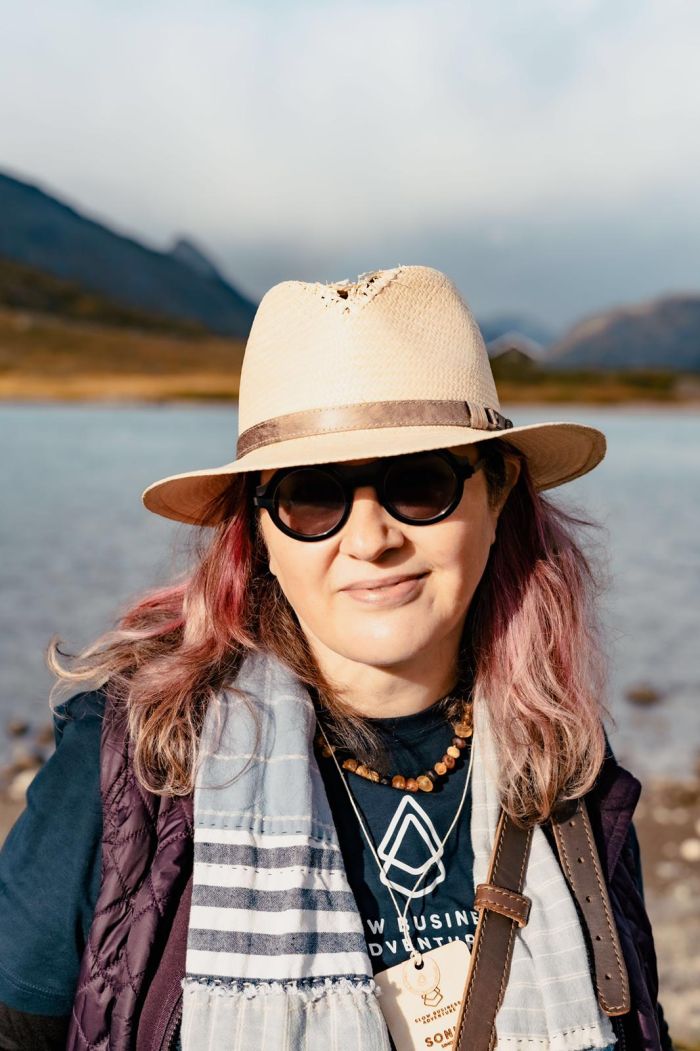
Sonia Simone: “Keep it useful and simple.”
If you ever wanted to learn about content marketing, chances are you’ve come across Sonia Simone’s excellent articles. As the Chief Content Officer at Copyblogger, Simone helped hundreds of thousands of marketers improve their writing skills.
“I first created and started emailing a list way back in 2007!”, Simone told us. “I was working in corporate at the time, and looking to transition to freelancing full time.”
After selling her interest in Copyblogger in 2019, Sonia Simone started two other companies: Remarkable Communication and Creative Fierce. She teaches writing for content marketers and every week, she sends out The Fierce – her newsletter with free resources and strategies to write more content without burning out.
Email marketing platform: ConvertKit
How The Fierce newsletter makes money: products and services; business consulting.
What’s an email marketing misconception you had before you started?
I think the biggest misconception was, “Don’t send too many emails.”
It’s a bit like longer persuasion copy – the right number of emails to send is the number that lets your audience get what they need and want. For some businesses, that’s daily. For others, it might be weekly or (rarely) every other week. Keep it useful and simple.
What are three great tactics you attribute your success to?
- I keep my content conversational and straightforward. If I’m struggling with publishing consistently, it usually means I’m overcomplicating things, or trying to tackle too many ideas in one piece.
- I love connecting people – I probably refer two-three business connections every week. I don’t really do it with the intention of being “strategic,” but I think it’s been useful to me over the long run. And even if it wasn’t, it makes me happy to do.
- I’m stubborn about the right things. I don’t give up, but I do change direction if something isn’t working. I think it’s crucial to keep that balance between staying focused on your vision but being willing to be flexible about how you’ll get there.
How do you make money with your email list?
My revenue comes 100% from products and services, mainly copywriting, courses, and business consulting/coaching. But I’m definitely looking at some ad models.
What’s your no. 1 piece of advice for people who want to start a newsletter?
Give yourself time to explore your topic and understand who you deeply want to serve. Don’t go too narrow at the beginning. But when your audience starts to send signals that they value some things you do more than others, follow that and let that shape your work.
Subscribe to Sonia Simone’s newsletter, The Fierce.
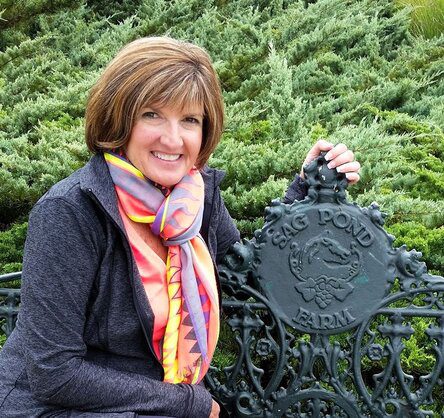
Terry Lederer: “Stay engaged with your readers!”
As the Artist Services and Product Manager for independent record label Little Flock Music, Terry Lederer wears many hats. One of them is coordinating and producing The Morning Star, the label’s monthly newsletter. It started as a traditionally mailed newsletter before going fully digital.
Little Flock Music is the independent record label started by singer-songwriter and live performer Peter Mayer with the release of his 1999 album “Romeo’s Garage.” In addition to a successful solo career, Mayer wrote, recorded, and performed with the late Jimmy Buffett for almost 35 years.
One of the reasons the label continues to grow, signing other successful artists, is its tight-knit community. The Morning Star newsletter reads like an email from a friend and keeps Peter Mayer’s fans updated on what is going on with his life and the rollout of merchandise for all of the label’s artists. Like staying in touch by sending a card, The Morning Star is integral to the community Peter keeps with fans.
Email marketing platform: We mailed our last physical newsletter edition in 2004. We initially switched to Constant Contact, but have been utilizing Mailchimp for many years.
How The Morning Star newsletter makes money: CDs; shirts; tickets to Peter Mayer’s live shows.
What is an email marketing misconception you had before you started?
As we moved away from mailing printed copies to fans and friends, I thought folks would miss the personal touch of receiving a physical newsletter in their mailboxes. We began emailing The Morning Star newsletter and with the help of social media, our distribution list has increased significantly. It’s become an interactive platform for sharing comments and stories among readers.
What are three great tactics you attribute your success to?
Peter Mayer is an incredible writer, and his “welcomes” are usually a quick check-in from wherever he is writing at the moment and a thanks to the fans and friends for all of their support. He always includes a personal tidbit, whether about the weather or writing new music or a quick mention of what’s new in his world.
Tour dates are always being added, and we include links to help readers quickly find tickets to shows near them or in areas they’d like to travel to.
We’ve adapted. Peter’s newest feature is called “That Reminds Me — Two-minute stories from life on the road with a Pirate.” Since Jimmy Buffett’s passing, Peter has dedicated this space to sharing humorous and personal stories about life on the road with Jimmy and the Coral Reefer Band.
Since this feature was added in September 2023, we’ve had a significant increase in subscribers. I think fans really enjoy this inside peek at how life on the road with such a legendary soul truly was.
How do you make money with your email list?
CDs, shirts, tickets to live shows – all of the above! When readers see a show in their area or know a friend or family member who is in a town near an upcoming show, ticket sales are boosted.
When folks click on a link to the Little Flock Shop, they can access a bevy of music and merchandise, and we’re delighted to fulfill those orders.
What’s your no. 1 piece of advice for people who want to start a newsletter?
Stay engaged with your readers! Be consistent with mailings and take every opportunity to build your subscription list.
Subscribe to Peter Mayer’s newsletter, The Morning Star.

Matt McGarry: “Get started with a minimum viable email.”
Once a week, Matt McGarry sends out his Newsletter Operator email. The newsletter teaches media companies and content creators how to grow and make money with their email lists.
He only started his own newsletter in 2023, but McGarry has been helping others monetize their databases for years through his company, GrowLetter.
To grow his list, McGarry offers a free resource, a guide on getting your first 1,000 subscribers. He believes that, once you start getting sign-ups, all you need is a “minimum viable email,” a concept he explains in our interview below.
“Matt’s newsletter is by far the best resource of all things newsletters,” says Morning Brew CEO Austin Rief.
Email marketing platform: beehiiv
How Newsletter Operator makes money: Converting subscribers into GrowLetter clients; a course; ads; affiliate marketing.
What is an email marketing misconception you had before you started?
I had two big misconceptions:
1.) You need to send emails every day.
2.) You need to have automated email marketing set up on day one.
I found it better to get started with “minimum viable email”.
For me, that was a weekly newsletter and a welcome email. I did that for months and generated many customers before adding more email sends and automated emails.
For others, minimum viable email could just be a welcome email.
The important thing is getting started: Collect more emails. Then figure out the best way to optimize your email marketing and newsletter later.
What are three great tactics you attribute your success to?
1. Sending a newsletter with valuable content every Saturday for over a year. I’ve published an email newsletter for 66 weeks now and have not missed an issue.
2. All of my social media posts include a call to action for my email list. I’m always working to convert my rented audience (social media) to an owned audience (email).
I have calls to action (CTAs) in my social profiles, CTAs at the end of each post, and I do weekly posts to tease the content in my newsletter and drive sign-ups.
How do you make money with your email list?
My #1 revenue source is a marketing agency, GrowLetter. Over 50% of clients have come from our email newsletter.
Also, I have a cohort-based course ($105k+ in revenue), I’ve sold ads in the newsletter (~$25k in revenue), and I occasionally promote products as an affiliate (~$20k in revenue).
What’s your no. 1 piece of advice for people who want to start a newsletter?
Don’t start writing a newsletter (yet)!
Do this instead:
- Spin up a simple landing page (beehiiv is a great option).
- Start publishing content on LinkedIn or Twitter daily.
- See what content resonates, who follows you, and what type of questions you get.
- Plug your “newsletter” landing page below every post and in your profiles.
- After you hit 100-500 subscribers and you know what type of content people want…
THEN start writing a newsletter.
Also, start with a weekly newsletter. You can always send more or less later.
Finally, in your newsletter, beg for feedback!
Written feedback from readers is the only way to improve and find content-market fit.
- Every newsletter should have a poll.
- Every newsletter should ask readers to reply.
- Respond to everyone who shares feedback and ask them questions.
Open rate and click-through rate (CTR) data are not enough to determine whether your content is good or not. A great newsletter should impact readers’ lives and businesses, not just have high open rates.
Subscribe to Matt McGarry’s Newsletter Operator.
To make money with your email list, keep it healthy
We loved interviewing these entrepreneurs and learning about how they approach email marketing. Their stories confirm, once again, why starting an email list for your business is so smart.
But email lists are fragile – at least 25% of the average database dies every year. Bounces cause mailbox providers to think of you as a spammer and direct your newsletters to the junk folder.
To help your emails go to the inbox instead and connect with your community, you have to get rid of obsolete contacts. And you need to do it regularly.
How about starting now?
Check 100 email addresses for free – and then do it again next month! That’s right, ZeroBounce lets you verify 100 contacts monthly at no cost.
Plus, you get 24/7 live customer support whether you’re a paying customer or just testing our email validator.
Start your account and improve the health of your email list in minutes.
Table of Contents
- Solo entrepreneurs make money with their email lists, too
- How to monetize your email list
- Laura Belgray: “Make every email an EFAB (email from a bestie).”
- What is an email marketing misconception you had before you started?
- What are three great tactics you attribute your success to?
- What's your no. 1 piece of advice for people who want to start a newsletter?
- Jason Feifer: “Create a newsletter you can reliably execute every week.”
- What is an email marketing misconception you had before you started?
- What are three great tactics you attribute your success to?
- What's your no. 1 piece of advice for people who want to start a newsletter?
- Eddie Shleyner: “A newsletter list is gold bars in the safe.”
- What is an email marketing misconception you had before you started?
- What are three great tactics you attribute your success to?
- How do you make money with your email list?
- What's your no. 1 piece of advice for people who want to start a newsletter?
- Emily Ryan: “You can monetize your newsletter with almost any following.”
- What is an email marketing misconception you had before you started?
- What are three great tactics you attribute your success to?
- How do you make money with your email list?
- What's your no. 1 piece of advice for people who want to start a newsletter?
- Josh Spector: “Provide specific value to a specific audience.”
- What is an email marketing misconception you had before you started?
- What are three great tactics you attribute your success to?
- How do you make money with your email list?
- What's your no. 1 piece of advice for people who want to start a newsletter?
- Gabby Ianniello: “There are no rules in this game, so make up your own.”
- What is an email marketing misconception you had before you started?
- What are three great tactics you attribute your success to?
- How do you make money with your email list?
- What's your no. 1 piece of advice for people who want to start a newsletter?
- Meryl Arnett: “Consistency is more important than any version of perfection.”
- What is an email marketing misconception you had before you started?
- What are three great tactics you attribute your success to?
- How do you make money with your email list?
- What's your no. 1 piece of advice for people who want to start a newsletter?
- Do you find more people to keep in touch with by subscribing to your newsletter or by subscribing to the podcast?
- Sonia Simone: “Keep it useful and simple.”
- What's an email marketing misconception you had before you started?
- What are three great tactics you attribute your success to?
- How do you make money with your email list?
- What's your no. 1 piece of advice for people who want to start a newsletter?
- Terry Lederer: “Stay engaged with your readers!”
- What is an email marketing misconception you had before you started?
- What are three great tactics you attribute your success to?
- How do you make money with your email list?
- What's your no. 1 piece of advice for people who want to start a newsletter?
- Matt McGarry: “Get started with a minimum viable email.”
- What is an email marketing misconception you had before you started?
- What are three great tactics you attribute your success to?
- How do you make money with your email list?
- What's your no. 1 piece of advice for people who want to start a newsletter?
- To make money with your email list, keep it healthy






